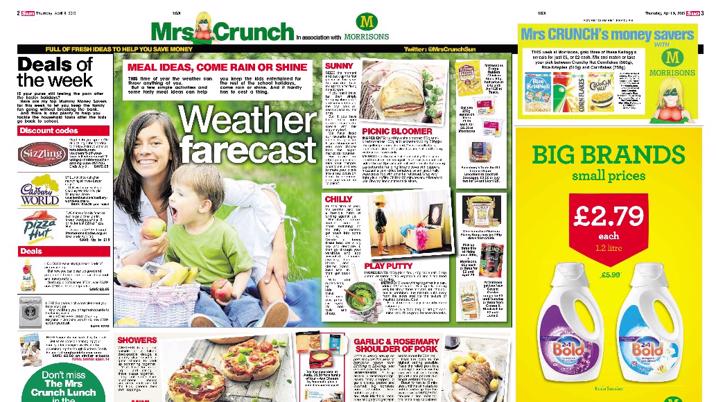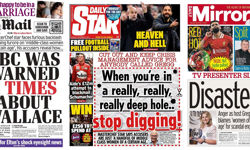
Would you trust a financial journalist who promoted a company in which he had shares?
Would you trust a science correspondent to report even-handedly on a new drug if she had previously written a promotional piece for the manufacturer?
The dangers of the former are so obvious that most newspapers forbid their writers from holding stock in their specialist sector. Some even bar business journalists from investing in shares at all.
Yet both national and regional newspapers are offering up their journalists to produce “branded content” for advertisers in a scramble to hitch a ride on the digital advertising bandwagon that they hope will pull them into profit and prosperity.
The figures are tantalising. The Advertising Association predicted last October that national newspaper advertising revenue would reach £1.42bn this year, £220m of it from digital. And it expects that to grow a further 23% next year to £270m.
Most big newspaper groups have set up in-house creative studios, promising advertisers “bespoke solutions” in what purports to be a mutually beneficial partnership. The company websites bounce with graphics and grate with jargon. Here’s an example from the Guardian: “Guardian Labs provides a truly collaborative approach to content creation. By working closely with the Guardian’s award-winning editorial, digital development and multimedia teams, we can ensure our clients find the most innovative and authentic ways of connecting with their target audiences in meaningful and lasting ways.”
Note how the award-winning editorial team takes precedence.
Trinity Mirror Solutions, too, make editorial involvement a key selling point: “Working together with clients and our editorial team, we tailor-make solutions that build strong connections between our audience and advertiser brands at both national and regional levels – a killer combination where boutique meets scale.”
News UK has gone so far as to name its studio the Newsroom. Creative content director Tiffanie Darke told digiday.com in February: “There’s no point in selling commercial content to a client and saying ‘We can do the content better than anyone else because we understand our audience’ if it’s not the actual journalists themselves doing the content. Otherwise you might as well hire an outside agency. It has to be the people who write for the readers every day who produce this stuff, guide it and inspire it.”
A newspaper that loses the trust of its readers has lost everything.
Editorial integrity
Do these teams deliver – and if so, what are the implications for editorial integrity?
All sides of the debate agree that to work, native advertising has to have the same tone and voice as the host publication / website, but must also be clearly labelled as promotional material.
The Sun and the Mirror both publish supplements aimed at families trying to stretch the household budget – but while the Sun’s (for Morrisons) appears under the pseudonym Mrs Crunch, the Mirror’s Quids In (for Aldi) gives its “Cash Queens” Tricia Phillips and Ruki Sayid picture bylines.
The Trinity Mirror website says: “We wanted to use the Cash Queens' influence… the pull-out features Aldi's monthly star offers and products, which the Cash Queens review, picking out their faves… To encourage even more store visits, a money-off voucher is included which gives shoppers £5 off when they spend £40 in Aldi.”
That voucher is said to be worth 75,000 extra sales for the Mirror.
To be fair, the “editorial” material generally seems to come down to a brief description of the goods or a recipe. But Phillips is the paper’s personal finance editor, Sayid is the consumer editor. They write about pensions and mortgages and savings; is it right for them to be linked in any way to any brand?
A more worrying example from the Mirror comes in the background to their April fool’s joke about a government department called the Office for Estimation. According to Emily Retter’s exclusive, the “secretive new agency” would analyse Twitter and Facebook to decide who should run the country if the election resulted in a hung parliament.
This was followed the next day by a page lead from Tricia Phillips headlined “Estimated energy bills are no joke”. The package included a story, rag-out, case study and fact box. There was also a panel on how to get a meter that sends information directly to suppliers and also allows you to monitor your power usage.
All very clever. But the original joke and the follow-up were presented as straight editorial, when they were in fact paid for by Smart Energy GB, a quango set up to encourage people to install the meters. A spoof URL at the foot of the first story takes you to their website.
It’s one thing to try to fool readers momentarily on April 1, and the Mirror may think that the meter campaign is one worth supporting, but it has not been open with the readers and that is dangerous. If readers suspect that they are being hoodwinked, they will lose trust in the paper. And a newspaper that loses the trust of its readers has lost everything.
Asked about the lack of labelling on this story, whether the company had a code to protect editorial integrity, and whether Phillips and Sayid were paid separately from the advertising budget for their Quids In contributions, Trinity Mirror responded with a statement: "We are comfortable that our commercial activities do not compromise our editorial standards. It is vital that we maintain and protect the value of our brand and our relationship with our readers.
"Throughout the media industry, the disruption of digital is driving a blurring of the lines and there is no longer the obvious church vs state divide that there was in the pure print era. Media publishers are commercial organisations and so we do need to monetise our audiences to survive. This is even more crucial for digital services where there is no cover price or subscription.
"Like most publishers, we work closely with our advertising clients. However, our editorial independence will never be jeopardised by commercial activity."
The company websites bounce with graphics and grate with jargon.
Editorial independence
This is the point everyone has been keen to press home since Peter Oborne’s resignation from the Telegraph with the charge – denied by the paper – that it suppressed the HSBC tax avoidance story for fear of losing a valuable advertising contract.
In April, the editor-in-chief of BuzzFeed was forced to publish a “mea culpa” memo to staff after being accused of pulling two stories from the UK site to appease advertisers. Ben Smith insisted that he had taken down the pieces – about Dove and Monopoly – not for commercial reasons, but because they were personal opinion and he was uncomfortable with their positioning. But he conceded that he had acted against the site’s code, which states “nothing should ever be deleted for reasons related to their content or because a subject or stakeholder has asked you”.
BuzzFeed has at least confronted the blurring of editorial and commercial boundaries with a code of ethics, which the newspaper industry has yet to match. After the Oborne furore, the Telegraph said it was drawing up new guidelines, but these have yet to appear. The press regulator Sir Alan Moses said that the Editors’ Code might need to be updated, but again we are still waiting.
The fact that HSBC put its advertising with the Guardian on hold while it ran its tax avoidance series provides evidence that on at least one paper, editorial is willing to defy commercial forces. But does the ethical equation work the other way about?
The Guardian has a so-called partner zone “brought to you” by Anglo American. There is no editorial involvement in this material and its source is clearly labelled, but Alan Rusbridger’s valedictory campaign is pressing the Bill and Melissa Gates Foundation and the Wellcome Trust to divest from all fossil fuel businesses – and Anglo American is number 5 on the list of 200 companies of which the paper disapproves.
It seems odd for the paper to pick a fight with two respected charities with the same ultimate objective of slowing climate change, but to do so while selling a corner of its website to one of the businesses it wants to starve of funds, is extraordinary.
Unfortunately, Rusbridger has not responded to requests for a comment on this.
BuzzFeed has at least confronted the blurring of editorial and commercial boundaries with a code of ethics.
Different at the Times?
For John Witherow at the Times, the Telegraph controversy was helpful in bringing home to everyone how things could go wrong. He rejects the concept of native advertising and says that advertorials may not use the same typography or look in any way like editorial: “Source transparency is vital to maintaining the readers’ trust.”
In fact, the News UK commercial site’s case studies do include money supplements that are presented in the Times’s editorial style, but these date to before the Witherow era and do not appear to have survived on the paper’s website.
What about Tiffanie Darke’s claim that reporters who write the paper collaborate with commercial? “We don’t have our journalists writing advertising copy,” he said. “They get good freelancers to write for them – they are good people, so it’s not rubbish, but they are not staff. We are very strict about keeping advertising and editorial apart.
Witherow also says that advertising content is monitored by his deputy, Emma Tucker, and that quite a lot is rejected. Would he allow Rotherham Council to sponsor a supplement? “Well, if they wanted to apologise…”
He also sees the paywall as protection from the incursions of native advertising: “It is more important for free websites. We have paying subscribers so we don’t need it. The same goes for those ads you’re forced to watch at the start of videos. We don’t have those.”
Things must be looking up at the Times if it can afford to turn its back on such a popular source of income.
It has not, however, been able to hold back the march of the ugly ads in the print edition. These may begin to disappear as the desperation subsides from the advertising market, and thank goodness for that. They may not have had a direct influence on content, but they detract from the integrity of the paper: the principle that editorial was what mattered most. Papers still sell their souls and their front pages with wraparounds that hide their true personalities from the reader, and circulation departments further squeeze editorial with demands for puffs for promotions and giveaways. It’s as though everyone has forgotten – or is ignoring – what readers tell us: that it’s news that sells papers.
We saw the ultimate example of that on Grand National weekend when the Daily Star shrunk its splash to a tiny single headlined “Oil” and the Daily Express gave up altogether, surrendering the front to a huge Aintree puff and an even bigger ad for eggs, milk, bread and washing-up liquid. What a commercial disaster that must have been for everyone but Lidl – the papers were so ugly that the passer-by would have carried on walking, uninformed about anything happening in the world beyond the fact that you could buy a baguette for 19p.
Papers still sell their souls and their front pages with wraparounds that hide their true personalities from the reader.












